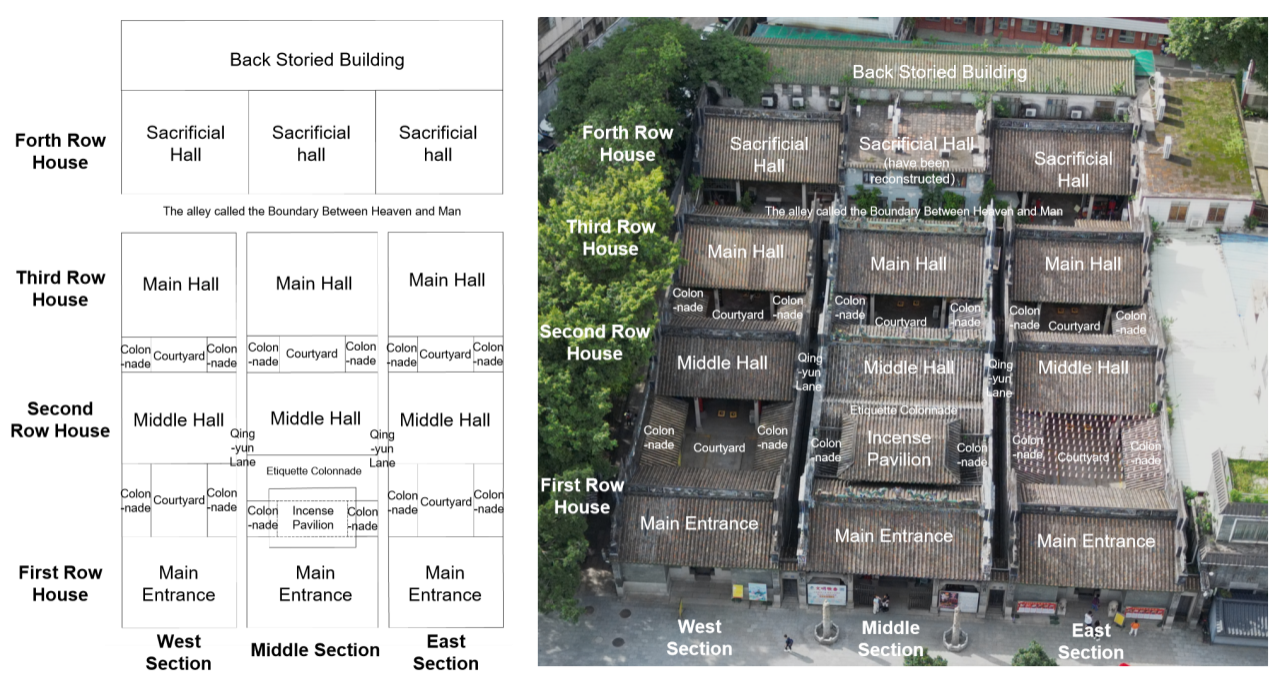

Volume 44
Published on October 2024Volume title: Proceedings of the 3rd International Conference on Art, Design and Social Sciences
Mental illness problems are supposed to be taken seriously all around the world because of the increasing number of patients and the complicated treatment process. However, patients with mental illness are suffering from public stigma and discrimination in various aspects of their lives. One of the most significant factors that lead to the formation of stereotypes is the development of modern media. The exaggerated violence in television programs and the inaccurate reporting of the news lead to misunderstandings about the mentally ill community. This stereotype spreads rapidly through both the Internet and social media. Special online mechanisms, such as large platforms and anonymity, also accelerate the spread of malicious comments and even stigmatize mental patients themselves. Figuring out the effects of media development on public perceptions of mental illness and the proper solutions is no time delay. Through analyzing the existing scientific research and reliable resources, it is concluded that although the media is a platform for information dissemination and diverse communication, inappropriate use of language and over-aesthetic depiction of mental illness without scientific analysis cause social prejudice and distorted portrayal of mental diseases, which has negatively affected the diagnosis and treatment of mental diseases. After exploring the causes of mental illness stigmatization and recent problems of modern media, the article also discusses several possible solutions for reducing the stigma, including the ways to improve public education and awareness of the mental illness community and alleviate patients’ self-stigmatized feelings.

 View pdf
View pdf



This paper focuses on the conservation of historical blocks and strategies for the regeneration of historical buildings under the backdrop of urban renewal, using the Wuhan Tiandi historical block as a case study. By analyzing issues such as cultural value loss, disappearance of block characteristics, and architectural homogenization faced by current historical blocks, targeted design strategies are proposed. These strategies include organic renewal through micro-circulation, emphasis on introducing diverse formats, respect for historical architectural elements, and the introduction of cultural activities and artistic installations. The aim of these conservation and transformation strategies is to preserve the original features of historical blocks, inject new vitality, safeguard urban historical memory, and promote sustainable development across the entire region.

 View pdf
View pdf


As a nation renowned for its economic miracles and technological advancements, South Korea – officially, the Republic of Korea – is simultaneously grappling with deeply rooted gender conflicts that reflect a broader societal struggle. Despite its rapid modernization, South Korea remains deeply influenced by Confucian traditions that have historically dictated rigid gender roles, resulting in the ongoing patriarchy and systemic marginalization of women in many aspects of their lives. These entrenched norms have given rise to pervasive misogyny, a significant social issue that continues to shape gender relations and provoke conflicts in contemporary Korean society. The seemingly veneer of modernity belies the persistent influence of traditional Confucian and patriarchal values that continue to profoundly shape gender relations and power structures within the country. Ultimately, this study aims to contribute to a deeper understanding of South Korea's gender landscape, illuminating the connection between its modern strides and the enduring influence of its cultural heritage. By exploring this dichotomy, it seeks to inform policymaking, social discourse, and grassroots efforts to foster a more equitable and inclusive future for all Koreans, irrespective of gender.

 View pdf
View pdf


In light of the expansion of globalization and the intensification of cross-cultural communication, there is an increasing necessity to learn a second language (L2). However, many L2 learners face emotional challenges throughout the learning process, which affect their learning experience and outcomes. This paper explores the emotional experiences of Chinese learners of English as a L2 and their impact on learning outcomes. Theoretical frameworks from positive psychology and educational psychology are then employed to investigate the roles of foreign language enjoyment and foreign language anxiety, as well as the moderating effects of classroom environment and social support. The results show that foreign language enjoyment has a positive effect on learning outcomes, whereas foreign language anxiety has a detrimental effect. In the case of semantic-prefix incongruence, high-level learners exhibited stronger interference effects, which indicates the complexity of affective information processing. Therefore, the paper not only deepens the comprehension of emotional factors in foreign language learning, but also provides valuable insights into foreign language teaching practices, which indicates that teachers should prioritize students’ affective experiences, optimize classroom environments, and offer positive social support to promote their affective engagement and learning outcomes. Future research should further explore the differences in students’ affective experiences in different cultural contexts to achieve more comprehensive and personalized foreign language teaching goals.

 View pdf
View pdf



Renwei Temple is the earliest recorded temple architecture established in the Cantonese region of the Song Dynasty to worship the Northern Monarch, one of the Taoist divinities. It is famous for its traditional folk culture activities such as the Northern Monarch's Birthday celebration. Renwei Temple showcases a paradigm of Cantonese folk temple architecture. It embodies the Chinese civilization's Taoist culture, philosophical thoughts and traditional activities, demonstrating the charm of architectural art in the Lingnan region. Through field investigation, interview and literature research, this paper conducts a case study of Renwei Temple in Canton, to reveal the internal relationship among religion, Confucian belief and architectural space of the Cantonese Temple, and to further explore the influence of the order of the relationship between God and Human, etiquette thought and social integration on architectural spatial characteristics in material aspect. It would help inspiring the restoration, renovation, innovation and inheritance of temple Architectures, or even the construction of public buildings in Cantonese region

 View pdf
View pdf


The urban park is an important part of the urban green space system and an essential factor in promoting sustainable development and urban transformation. The functions and corresponding design methods of urban parks also reflect the background and development requirements of different periods. In response to the requirements of urban development in different periods, parks in Xi’an have gradually changed from a single function of recreation to a function of cultural exchange and, in recent years, to a function of habitat protection. In order to better discuss and analyze characteristics and provide inspiration for further study, the article aims to divide the period from 1949 to 2020 into four stages according to the historical background, and make a comparative analysis according to the corresponding overall planning requirements and examples. The study will combine data with field visits to representative parks from four periods and analyze the relevance of their design and impact to the requirements of the times.The renovation of ancient gardens lays the foundation for the construction of parks, the protection and development of cultural heritage sites increases the role of parks in cultural construction, and the development and construction of ecological wetlands increases the function and role of parks in the construction of ecological civilisation. It can be concluded that the function of the park is also correspondingly related to its design approach.

 View pdf
View pdf


In an era defined by globalization and rapid technological advancement, China’s cultural industry is undergoing a significant transformation. This study investigates the profound effects of digital transformation on China’s cultural industry, focusing on digital cultural innovation products such as digital art, virtual reality experiences, and online cultural creations. As globalization and technological advancements reshape cultural production, dissemination, and consumption, China’s digital cultural sector has emerged as a significant global player. This research systematically reviews literature, industry reports, and case studies to analyze how Chinese digital cultural products are influencing marketing and communication strategies. The findings reveal that advancements in virtual reality, augmented reality, and artificial intelligence are leading to the creation of immersive and diverse cultural experiences, significantly enhancing consumer engagement and market reach. The study also highlights the transformative role of digital tools in marketing, including dynamic content creation and interactive experiences, while addressing challenges such as market saturation and the need for balanced engagement strategies. Future research should incorporate quantitative and qualitative data to further explore these dynamics.

 View pdf
View pdf


The Americans with Disabilities Act (ADA), enacted in 1990, set a milestone in protecting the civil rights of disabled Americans. This paper evaluates the impact of the ADA through its historical contexts, components, challenges in enforcement, and contributions of the ADA to the lives of the American people, including employment, equal access to education, public space and transportation. The ADA has successfully reduced barriers and fostered greater inclusion in society. However, its enforcement also faced many significant challenges, especially in rural areas and for small businesses due to limited economic conditions and lack of resources. Furthermore, the ADA places a significant focus on accommodating the need for physical abilities, which makes public society question whether the ADA can satisfy the needs of people with mental health and cognitive disabilities. Finally, the paper recommends regularly updating the ADA to integrate assistive technical supports. Continuous advocacy is required to enhance the position of the ADA as a legal tool for promoting equality and ensuring that all Americans can participate fully in their lives.

 View pdf
View pdf


International students studying in English-speaking countries represent a diverse linguistic background and may exhibit varying degrees of accent, which can influence their self-perception and their perception of others. Accordingly, the paper examines the attitudes of international students toward their own accents and those of native English speakers, with particular emphasis on their adaptation processes in academic and social contexts. In this paper, semi-structured interviews were conducted with undergraduate and postgraduate students from China, with varying levels of English proficiency and length of residence in the UK, which aims to elucidate the nuanced attitudes of international students towards accents and their adaptation strategies. The results show that while many students initially perceived British and American accents as prestigious and attempted to imitate them, as they progressed through the language environment they were more inclined to prioritize effective communication and intelligibility over achieving a perfect native accent. This shift is consistent with existing literature, which emphasizes the importance of prioritizing clarity and mutual understanding. Inclusive language policies that prioritize linguistic diversity and communicative effectiveness, thereby fostering learning environments that are conducive to language acquisition.

 View pdf
View pdf


In contemporary China, learning English has been considered as a must for almost all students, with the pronunciation acquisition usually being the initial focus. Among the phonetic elements, the mastery of vowel pronunciation is particularly crucial in that vowels are an essential element of language. Due to its great importance, numerous studies have comparatively analyzed the English and Mandarin vowel systems and experimentally listed the challenges Chinese English learners may face. Based on these analysis, feasible measures to handle the problems posed for Chinese learners are proposed. This paper collects and concludes logically the main discoveries and theories that have been raised by former scholars, with the aim of clearly presenting the disparities between the vowel systems of the two languages, illustrating the difficulties those differences may bring about, and sharing some approaches in which teachers can help their students to get out of the way. Despite the similarities and differences between the two vowel systems, which can lead to pronunciation errors, strategies such as meticulous comparison and immediate correction can aid students in getting rid of these obstacles. Therefore, this paper is of significant value in elucidating the difficulties encountered by Chinese students in learning English pronunciation and in outlining effective pedagogical strategies for teaching pronunciation.

 View pdf
View pdf




